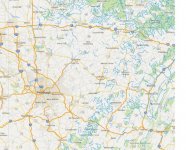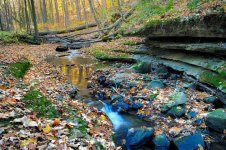Yeah, I've spent some time in that area. Even the far western counties north of there are pretty lean. I realize Crawford, Venango, etc. have a lot of streams but they are on the eastern edge of those counties, the western edges are pretty poor. But Lawrence, Butler, Armstrong, Mercer, etc. have a couple streams but are VERY poor as well. Pretty much S of I-80 and west of 119 is poor. North of 80, then you still gotta get east of I-79.
It's geological, but I don't think acid rain is the primary culprit. It's primarily a shale bedrock, and groundwater flows are atrocious, even by freestoner standards. A stream large enough to hold water year round gets too warm in the summer. A stream small enough to stay cold goes dry. Plus, there's a whole lot of bituminous coal seams, so sulfuric acid forms naturally. The poor area coincides largely with traditional coal mining zones, but it is not confined to areas that were mined. Hence, the poor trout habitat and coal mining are correlated, but not cause-effect. The cause of both is the geology and presence of coal to begin with.
And, of course there could be a few that would be borderline streams in other areas. Meaning they'd hold fish if they were in, say, Potter County, but wouldn't be "good". But in Potter there are "safe" streams. Meaning when you get that one bad summer, the poor streams may be wiped out, but they just reseed themselves from the better ones and recover. Down there, that bad summer literally wipes out everything. And then there's nothing to reseed them.
Swattie's probably right that a pair of brown trout have reproduced at some point. That doesn't make them a wild trout stream. They have to be self-sustaining. Multiple year classes and all that. Modern stockies rarely if ever seed a self sustaining population.






